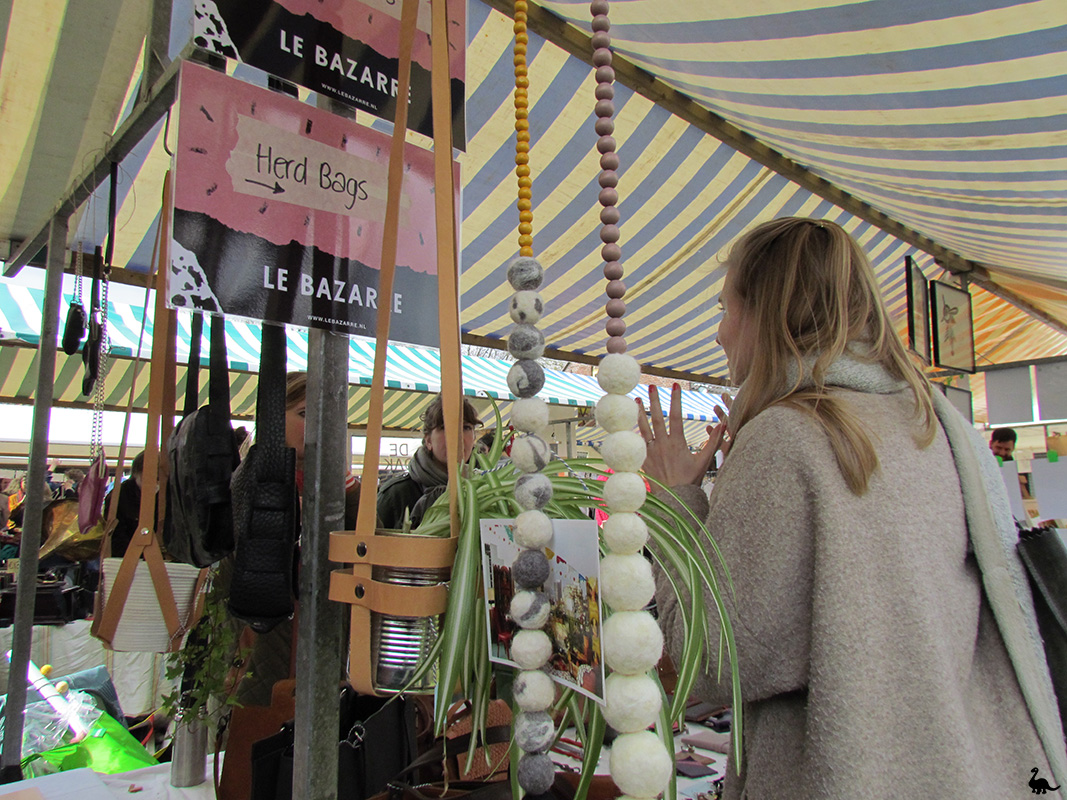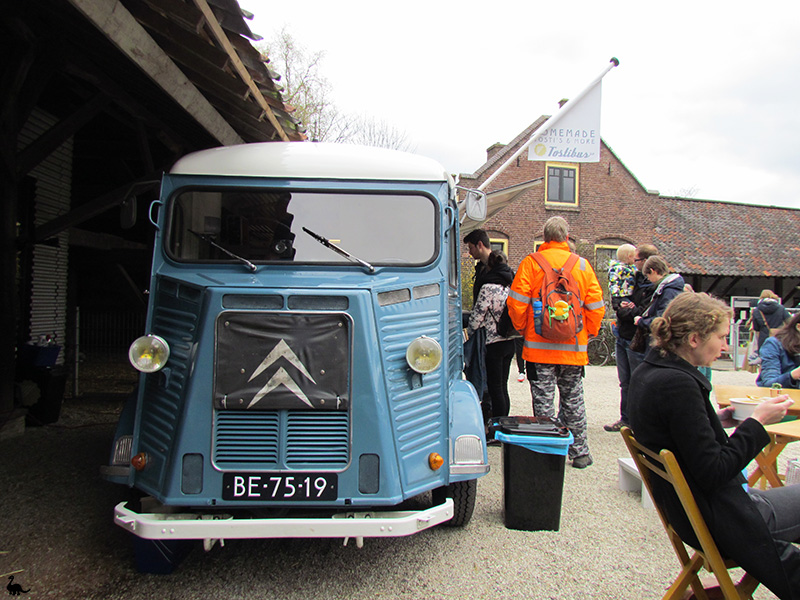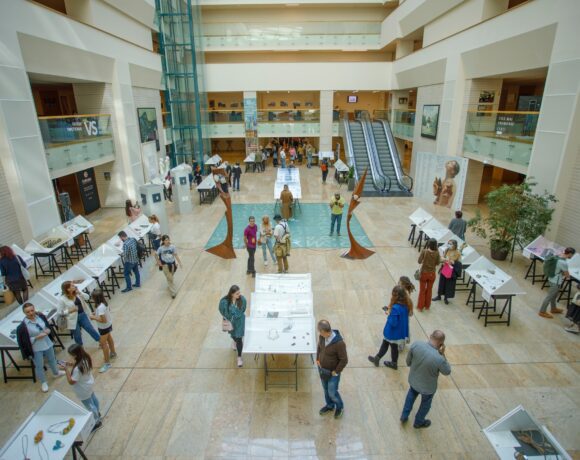Le Bazarre este o piață mobilă a orașului Utrecht din Olanda. Fiecare ediție are loc în altă locație a orașului și promovează producători diferiți de fiecare dată. Produsele sunt în general: vintage, design, îmbrăcăminte, vinil, cărți, tablouri, handmade și produse alimentare locale. Accentul se pune foarte puternic pe promovarea producătorilor locali.
Le Bazarre is a Utrecht based small cozy market. Each edition of the market takes place in a different location in the city and has a different list of sellers. The profile of the market is oriented towards quality vintage, design, used clothing, vinyl, books, graphic work, home made and local produce. As it is a local focused market there is a very strong focus on promoting the local producers.

Cea mai recentă ediție a fost organizată în complexul celei mai cunoscute mori a orașului: Molen De Ster (1739-1911). În 1721, la această locație a fost contruită o primă moară de cherestea, Sînt Job. La vremea respectivă moara era în afara orașului pe malul râului pentru a facilita transportul lemnului. Proprietarii noii construcții erau Jordan van der Ven și Arien van der Starren. Pentru că această moară a ars în anul 1815, o nouă moară a fost comisionată pentru construcție. Noul proprietar Cornelis-Jan van Veersen a denumit noua moară De Bijgeval. Această a funcționat continuu până în anul 1909 când a fost demolată.
O a treia moară, ultima comisionată pentru această locație, este construită în 1739. Numele acesteia a fost decis pe baza numelui noului proprietar Van de Starren. Moara a fost în posesia familiei aproximativ un secol, timp în care producția de cherestea a funcționat fără pauză.
Introducerea electricității semnifică practic începutul sfârșitului. După conectarea structurii la rețeaua electrică în 1911, elicea morii este demolată. Structura continuă totuși să funcționeze menținând o producție de cherestea constantă până în anii 80, însă nu are nici o șansă să se mențină competitivă în fața noilor tehnologii.
Pe lângă pasiunea pentru biciclete și investițiile uriașe în tehnologia reclamării pământului, olandezii au investit mult timp și energie în prezervarea construcțiilor morilor de vânt. Ca mai peste tot în lume, odată ce fezabilitatea unei tehnologii/construcții s-a terminat s-a dorit înlocuirea acesteia. În acest caz pentru că familia De Starren a lăsat o amprentă de peste 100 de ani, în 1988 s-a creat fundația Sterremolen al cărei țel a fost restaurarea structurii. A durat 11 ani pentru a obține fondurile necesare și a finaliza lucrul. Restaurarea a fost făcută folosind același principiu ca la Muzeul Satului din București. Părțile existente au fost desfăcute bucată cu bucată și restaurate. Părțile lipsă au fost refăcute după planurile originale și toată structură a fost livrată pentru asamblare la locație precum un dulap de la Ikea.
The most recent edition took place at the most known windmill of the city: Molen De Ster (1739-1911). The windmill is the last to have been built at this location. The area was originally outside the city on the river front for easy transport over the water of the raw material. The first sawmill Sint Job was built in 1721. The clients were Jordan van der Ven and Arien van der Starren. The mill burned down in 1815 and another mill De Bijgeval was built for the new owner Cornelis-Jan van Veersen. The mill was however demolished in 1909.
A third and last to be commissioned for this location was built in 1739. The name De Ster was given after the name of the owner Van der Starren. The family owned the mill for about a century time in which it continually functioned.The arrival of electricity was in reality the beginning of the end. As the structure is connected to the grid in 1911 the windmill mechanism becomes obsolete and the top part gets demolished. With electricity the mill continues to function maintaining a continuous production until the 80’s. It unfortunately unable to compete with the new technologies and becomes obsolete as a production unit.
Besides the love for bicycles and insane investments in the reclaiming land technology , the Dutch invested a lot of time and love in preserving a large number of windmills throughout the country in perfect state. The most common reaction to a technology or a building becoming unproductive is to have it removed. However due to the long standing involvement of the De Starren family in 1988 the Sterremolen foundation was created with the goal of restoring the mill to its original state. It took the foundation about 11 years to gather the funds and complete the restoring process. The restoration was done by dismantling the existing, restoring every piece and rebuilding the missing pieces. Once all the pieces were available the mill was practically assembled like a jigsaw puzzle.
Aceasta a fost prima mea vizită la o ediție organizată de Le Bazarre așa că nu știam la ce să mă aștept. Piața relativ mică mi-a dat o puternică senzație de intimitate. Chiar dacă la o privire mai atentă vânzătorii puteau fi observați lucrând serios la a-și prezenta produsele și atrage cumpărători senzația era de zi obișnuită afara în parc. Oameni relaxați, copii la fiecare pas (după cum v-am mai povestit îmi place la nebunie faptul că olandezii își iau copiii peste tot) muzică, aer proaspăt, puțin răcoare în ciuda promisiunilor meteo de 18 grade, cafea din belșug și un porc. Da, într-adevăr, ai citit bine, un porc. Acesta împreună cu un cocoș burzuluit erau într-un țarc într-una dintre construcțiile laterale făcând deliciul tuturor copiilor pe care îi ignorau complet.
Produsele de vânzare variau de la obiecte la mâna a doua, îmbrăcăminte, mâncare, obiecte de design, desene și bijuterii. O mini vagonetă albastră absolut adorabilă servea ca bucătărie sub numele de Tosti Bus. Precum era de așteptat era organizată și o zonă de bar cu cafea, ceai de mentă proaspătă, prăjituri și alte de-ale gurii.
It was my first visit to one of the Le Bazarre markets so I had no clue what to expect. The market felt small and rather intimate. Though the sellers were hard at work it gave me the feeling of a simple day out. People were relaxed, children everywhere (as I previously mentioned in my Dutch Design article, I like the fact that Dutch people take their kids everywhere) music, fresh air, not too warm despite the promise of 18 degrees, plenty of coffee and a pig. Yes, you read well, a pig. The pig accompanied by a cranky rooster were in adjoined area completely ignoring the children that would have loved to be able to pet them.
Merchandise wise there was a large variety from second hand items, clothing, food, design, drawings and jewelry. An absolute adorable blue van housed the Tosti Bus. There was obviously a food area with coffee, fresh mint tea, cookies and more.






Moara este deschisă pentru vizitare o dată pe săptămână cu acces gratuit și ghizi la dispoziția vizitatorilor atat în Olandeză cât și în alte câteva limbi străine. Interiorul e prăfuit și plin de materiale, plin de roți și rotițe de lemn și sfoară din belșug. Totul scârțâie și cârâie și e absolut perfect. Treptele înguste și înalte creau când și când mici ambuteiaje datorita numarului mare de vizitatori iar toate piesele structurale de lemn au crăpături lungi și adânci. Cu trecerea timpului și datorită variaţiilor în temperatură lemnul lucrează. Se ajustează la mișcarea clădirii ca întreg fie unflându-se fie crăpând. Dacă variațiile sunt în limite decente (lemnul putrezește atunci când se alternează scufundarea sa în apă cu perioade în care este uscat) lemnul este un material de construcție cu o rezistență surprinzător de îndelungată. Tot ceea ce v-am povestit până acum știam încă din primul an de facultate. Ceea ce nu știam în schimb este că prima dată când o moară de lemn este pornită, aceasta se așază în loc și se ajustează singură. În procesul de ajustare piesele structurale crapă de sus până jos. Iar toată această mișcare creează un zgomot mult mai înspăimântător decât orice film horor produs vreodată. Dar odată acest proces de ajustare terminat lemnul este stabil, moara funcțională și proprietarii fericiți.
Though I loved the relaxed vibe of the market I fell in love with the windmill. That should be no surprise from an architect…
The mill is open for public once a week. The access is free of charge and there are guided tours in multiple languages. The space was dusty and full of materials, wood wheels and rope. It was all squeaky and crunchy and perfect. The steps were narrow and steep which resulted in traffic jams every once in a while. All the structural pieces of wood are cracked. Long deep cracks with a rather scary aspect for the unaware. With time and differences in temperature wood works. It adjusts to the movement of the building as a whole either expanding or cracking. If kept within decent limits (as in not submerged in water part of the time) wood is a really long lasting construction material. What I did not know however was that the first time the mill is turned on it makes a horror howling, a noise that screeches all the way to your bones while the wood cracks. Once that is done the wood is stable, the building is safe and the builders happy.
Ca vizitator pedestru există totuși o anumită limitare în perspectivele posibile. Moara mi-a oferit un avantaj superb putând să prind forfota de sus, însă nu a fost suficient pentru a prinde frumusețea împrejurimilor. Pe site-ul morii, la pagina de istoric, am găsit filmulețele de mai jos. Primul este o filmare aeriană a acestei bucăți de oraș iar al doilea este o filmare interioară a morii și a mecanismelor în mișcare.
The access to the higher level of the mill allowed me more vantage points and a much more interesting perspective. However there so much one can do while on foot. While researching the historical facts on the website of the mill I found the video’s bellow. The first is a drone footage of the area while the second one is a view of the interior mechanism while in full motion.
Sper că v-a plăcut această bucățică de Olanda! Pe data viitoare!
I hope you have enjoyed this little piece of the Netherlands, till net time!




NO COMMENT